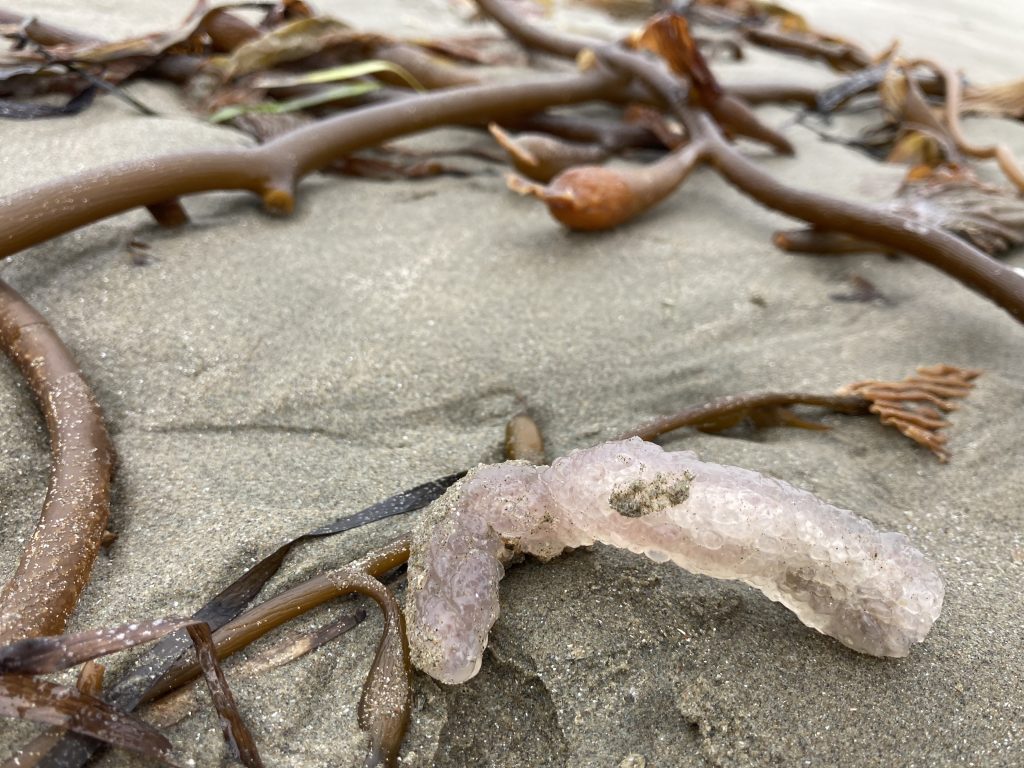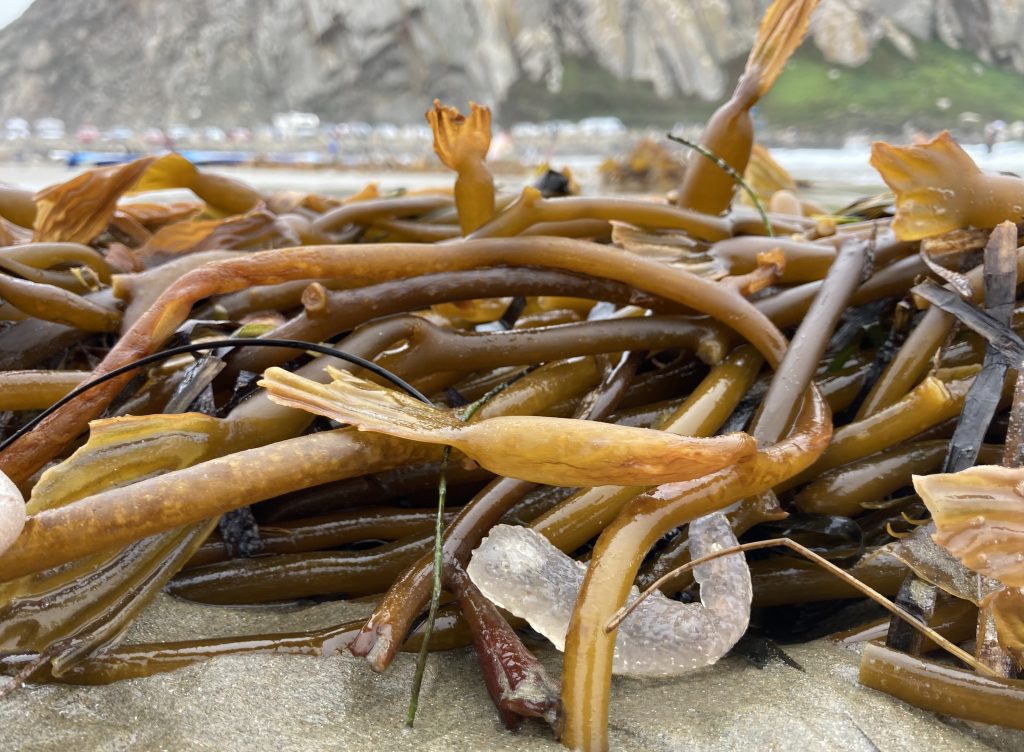When you visit a beach on California’s Central Coast, you can expect to find certain kinds of organic debris washed ashore. Long, ropy, stalks of giant kelp (Macrocystis pyrifera) amass in muted green piles at the high tide line. Knotted lengths of driftwood, smoothed by the rough waves, stud the sand. Bone-white sand dollars adorn wavy lines of seafoam, looking like treasure to beach-going kids.
You’ll find the occasional moon jelly of by-the-wind sailor, which are stranding more often this summer due to the prevailing winds and ocean currents.
And, on rare occasion, you’ll happen upon something you’ve never seen before.
Pyrosoma atlanticum, a deep-sea “fire body” washed ashore
That’s what happened to many beach-combers at Morro Strand on August 29, when they found a scattering of what looked like dozens of arms detached from transparent sea stars or see-through sea cucumbers.

These mysterious transparent beach finds are a type of animal commonly called a pyrosome, or sea pickle. The scientific name of the species found on Morro Strand this August is Pyrosoma atlanticum. Which roughly translates to “Atlantic fire body.” The “fire body” part of their name comes from their ability to give off light from chemical reactions in their bodies, a power called bioluminescence.
This video from deep sea exploration vessel OceanX shows a Pyrosoma atlanticum colony bioluminescing.
While these pyrosomes look other-worldly and have “atlanticum” in their scientific name, they are native to the ocean off the coast of California and other temperate marine waters across the world. (The first specimen was found in the Atlantic Ocean, and the location stuck in the name.)
Though they may look like pieces torn from a larger organism, the truth is pretty much the opposite. Each organism is a colony of many tiny filter-feeding animals called zooids that are fused together around a tube that they create into a twisted, knobby, funnel shape. This type of organism is called a colonial tunicate.

How pyrosomes feed
Pyrosome colonies float free in the ocean, typically 250 meters and deeper below the surface. As they float, individual zooids take in water from the exterior of the pyrosome, filtering out any nutrients they can find. When they’ve gleaned what food they can, the zooids expel the filtered water into the inside of the pyrosome funnel. The force of the water can actually propel the pyrosome forward.
This video from the Monterey Bay Aquarium Research Institute shows a pyrosome floating through the water.
Giant pyrosomes
The pyrosomes that tend to wash up in California are smaller than your hand. However, giant pyrosomes can grow to sixty feet long!
In this video, you can see a giant pyrosome found by divers off the coast of Tasmania, Australia.
More on lesser-seen wildlife species
In addition to the wildlife we typically think of populating the waters of the Morro Bay estuary and local creeks, or making their homes on our beaches and beyond, there are many lesser-known wildlife species out there. To learn about some of them, read this blog that highlights the common salp (another transparent marine organism!), toe biters and caddisflies (freshwater bugs), and swallowtail butterflies.
And, subscribe to our blog to have Wildlife Spotlight posts and other information about the Morro Bay estuary and surrounding lands delivered to your inbox each week.
Help protect and restore the Morro Bay estuary
- Donate to the Estuary Program and support our work in the field, the lab, and beyond.
The Estuary Program is a 501(c)3 nonprofit. We depend on funding from grants and generous donors to continue our work. - Purchase estuary-themed gear from ESTERO. This locally owned and operated company donates 20% of proceeds from its Estuary clothing line and 100% of Estuary decal proceeds to the Estuary Program. Shop online at esterosurf.com or at Joe’s Surfboard Shop in Morro Bay. Thank you, ESTERO!
- Purchase items from the the Estuary Program’s store on Zazzle. Zazzle prints and ships your items, and the Estuary Program receives 10% of the proceeds. Choose from mugs, hats, t-shirts, and even fanny packs (they’re back!) with our fun Estuary Octopus design or our Mutts for the Bay logo.